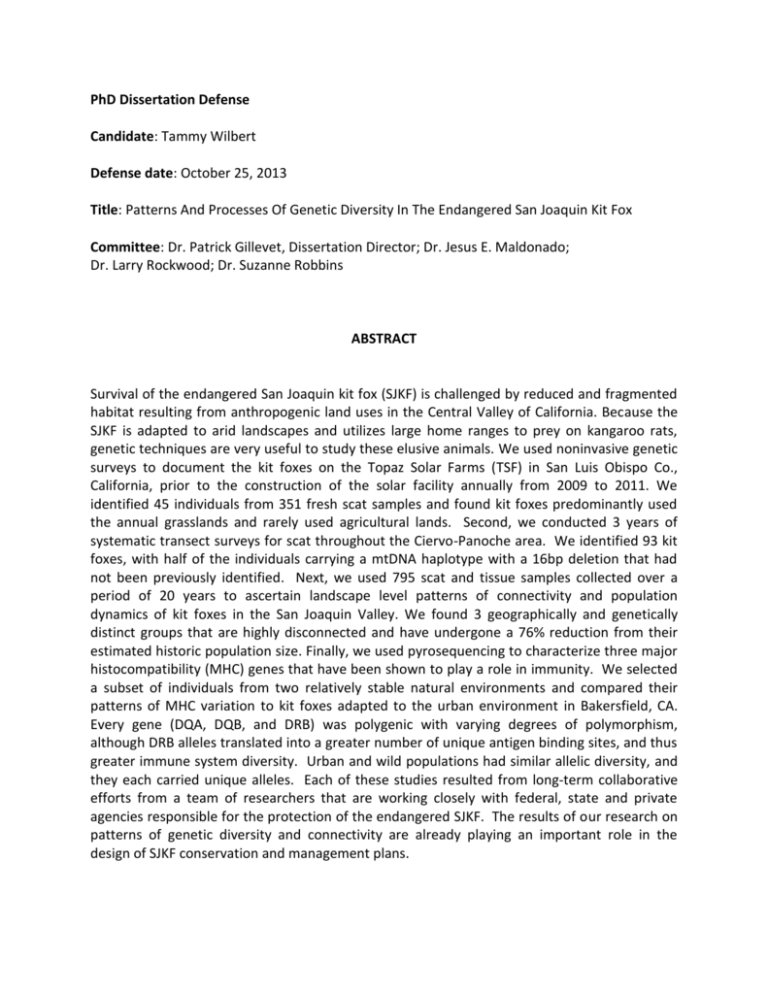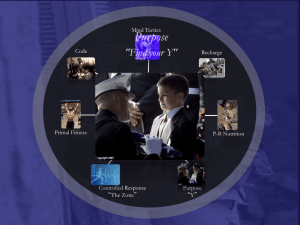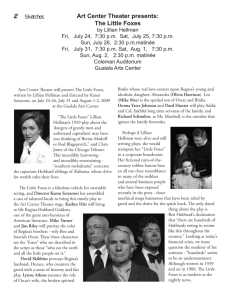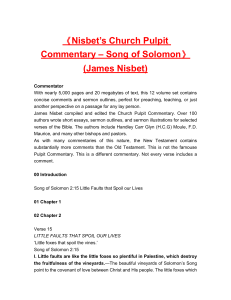Patterns And Processes Of Genetic Diversity In The Endangered
advertisement

PhD Dissertation Defense Candidate: Tammy Wilbert Defense date: October 25, 2013 Title: Patterns And Processes Of Genetic Diversity In The Endangered San Joaquin Kit Fox Committee: Dr. Patrick Gillevet, Dissertation Director; Dr. Jesus E. Maldonado; Dr. Larry Rockwood; Dr. Suzanne Robbins ABSTRACT Survival of the endangered San Joaquin kit fox (SJKF) is challenged by reduced and fragmented habitat resulting from anthropogenic land uses in the Central Valley of California. Because the SJKF is adapted to arid landscapes and utilizes large home ranges to prey on kangaroo rats, genetic techniques are very useful to study these elusive animals. We used noninvasive genetic surveys to document the kit foxes on the Topaz Solar Farms (TSF) in San Luis Obispo Co., California, prior to the construction of the solar facility annually from 2009 to 2011. We identified 45 individuals from 351 fresh scat samples and found kit foxes predominantly used the annual grasslands and rarely used agricultural lands. Second, we conducted 3 years of systematic transect surveys for scat throughout the Ciervo-Panoche area. We identified 93 kit foxes, with half of the individuals carrying a mtDNA haplotype with a 16bp deletion that had not been previously identified. Next, we used 795 scat and tissue samples collected over a period of 20 years to ascertain landscape level patterns of connectivity and population dynamics of kit foxes in the San Joaquin Valley. We found 3 geographically and genetically distinct groups that are highly disconnected and have undergone a 76% reduction from their estimated historic population size. Finally, we used pyrosequencing to characterize three major histocompatibility (MHC) genes that have been shown to play a role in immunity. We selected a subset of individuals from two relatively stable natural environments and compared their patterns of MHC variation to kit foxes adapted to the urban environment in Bakersfield, CA. Every gene (DQA, DQB, and DRB) was polygenic with varying degrees of polymorphism, although DRB alleles translated into a greater number of unique antigen binding sites, and thus greater immune system diversity. Urban and wild populations had similar allelic diversity, and they each carried unique alleles. Each of these studies resulted from long-term collaborative efforts from a team of researchers that are working closely with federal, state and private agencies responsible for the protection of the endangered SJKF. The results of our research on patterns of genetic diversity and connectivity are already playing an important role in the design of SJKF conservation and management plans.











